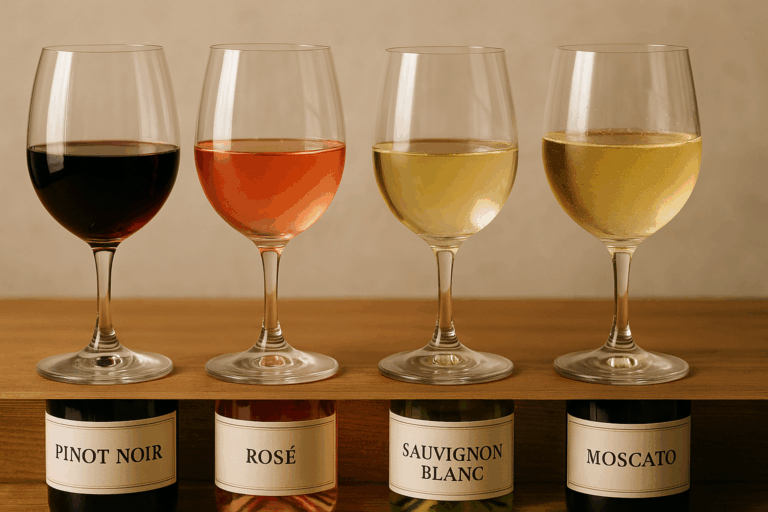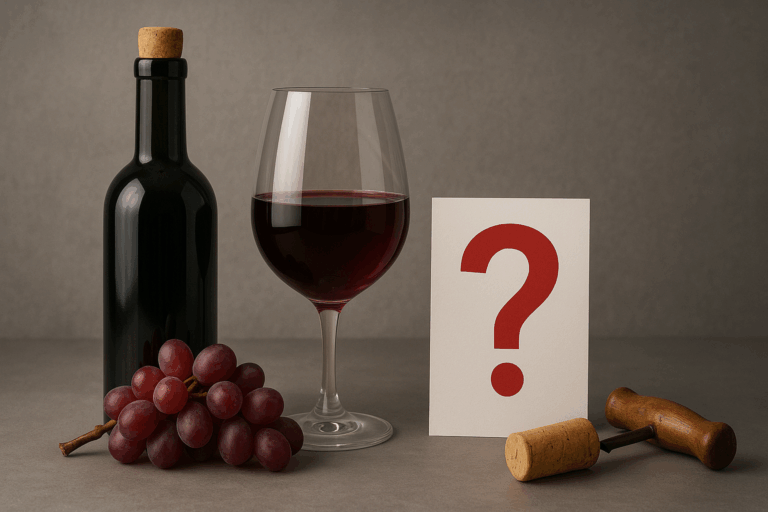What Is the Difference Between Dry, Sweet, and Semi-Sweet Wine?
If you’ve ever seen a wine labeled as “dry” or “sweet” and felt confused, you’re not alone. These terms are essential for understanding how a wine tastes — and choosing one you’ll actually enjoy. The difference has less to do with how the wine feels in your mouth, and more to do with sugar content and perception.
In this article, we’ll explain exactly what these terms mean, how they affect flavor, and how to pick the right one for your taste preferences.
What Does “Dry” Really Mean?
In wine terminology, “dry” doesn’t mean bitter, harsh, or lacking in moisture. Instead, it refers to the absence of residual sugar — the natural grape sugar that remains after fermentation.
A wine is considered dry when:
- The yeast converts nearly all the sugar into alcohol
- There is little to no sugar left in the final product
- You don’t taste sweetness when sipping it
Most table wines (red and white) are technically dry, even if they still feel fruity.
Examples of dry wines:
- Cabernet Sauvignon
- Merlot
- Chardonnay
- Sauvignon Blanc
What Is a Sweet Wine?
Sweet wines have noticeable sugar left after fermentation. This can happen naturally or be a result of winemaking choices.
A wine is considered sweet when:
- It contains a high amount of residual sugar
- You can clearly taste the sweetness
- It often pairs well with desserts or spicy foods
Examples of sweet wines:
- Moscato
- Sauternes
- Port
- Ice Wine
Sweet wines can range from lightly sweet (like some Rieslings) to syrupy and rich (like Tokaji or sweet Sherries).
What About Semi-Sweet or Off-Dry?
Some wines fall between dry and sweet — these are called semi-sweet, off-dry, or medium-sweet. These wines have a subtle sweetness but are not sugary.
They’re great for those who want a hint of sweetness without being overwhelmed.
Examples of semi-sweet wines:
- Gewürztraminer
- Off-dry Riesling
- Lambrusco (semi-sweet styles)
- Some Rosés with residual sugar
These wines often work well with Asian cuisine, BBQ, and soft cheeses.
Dry vs Sweet: The Science of Residual Sugar (RS)
Residual sugar is measured in grams per liter (g/L). Here’s a rough guideline:
- Dry: 0–4 g/L
- Off-dry / Semi-sweet: 5–30 g/L
- Sweet: 30+ g/L
However, sweetness perception is also influenced by:
- Acidity – Higher acidity makes wine taste less sweet
- Tannins – Can mask sweetness in reds
- Alcohol – Higher alcohol may enhance or soften the sweetness
That’s why a Riesling with 20g/L sugar may taste drier than you expect — it’s highly acidic and well-balanced.
How to Tell If a Wine Is Sweet Without Tasting It
Sometimes the label doesn’t make it obvious. Here are a few tips:
1. Look for Clues on the Label
- Terms like Sec, Trocken, or Brut often mean dry
- Demi-Sec, Halbtrocken, or Amabile suggest medium sweetness
- Doux, Dolce, or Moelleux usually indicate sweet
2. Check the Alcohol Level
In white wines, lower alcohol (under 11%) can signal more sugar, especially in Moscato or sweet Rieslings.
3. Know the Region
- German Kabinett Riesling = usually off-dry
- French Sauternes = sweet dessert wine
- Portuguese Port = fortified and sweet
- New Zealand Sauvignon Blanc = dry and zesty
Choosing the Right Wine for Your Taste
If you prefer:
- Crisp, fresh, and non-sweet flavors → Try dry whites like Sauvignon Blanc or Pinot Grigio
- Bold, dry reds with no sugar → Try Cabernet Sauvignon or Tempranillo
- Soft, smooth with a hint of sweetness → Try off-dry Riesling or Gewürztraminer
- Sweet, fruity, and easy to drink → Try Moscato or Lambrusco Dolce
Food Pairing by Sweetness Level
- Dry wine + salty food = Great contrast (e.g., Sauvignon Blanc + goat cheese)
- Off-dry wine + spicy dishes = Soothes the heat (e.g., Riesling + Thai food)
- Sweet wine + dessert = Complements richness (e.g., Port + chocolate cake)
Final Thought: Sweetness Isn’t a Quality Judgement
Dry wines aren’t “better” than sweet wines — they’re just different. The best wine is the one that suits your taste, mood, and occasion.
Now that you understand the difference between dry, sweet, and semi-sweet, you can shop smarter, enjoy pairings more, and confidently explore wines that match your personal style.






